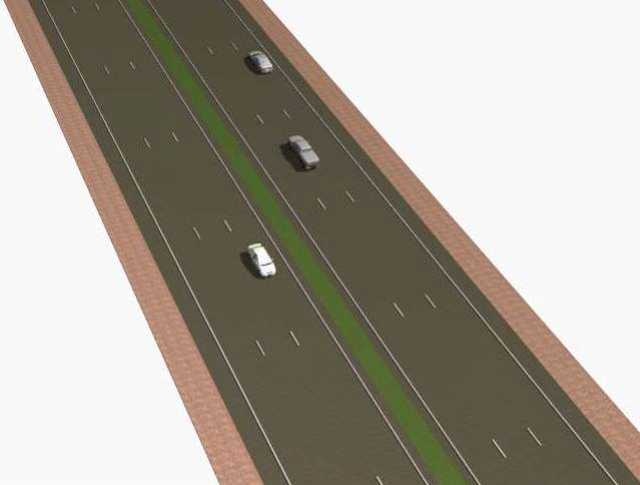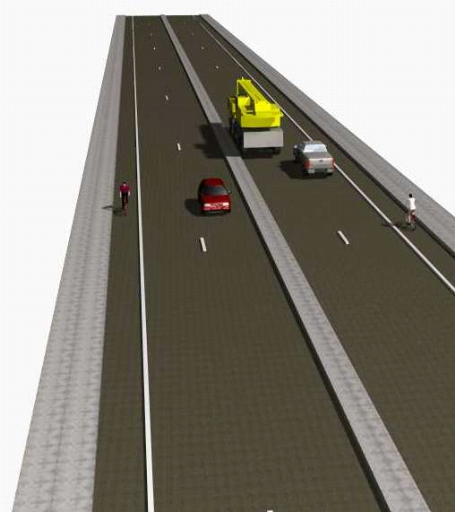4.2. Proposals of standard cross sectional profile.
With regard to the various Cameroonian urban centers in
general and the town of Yaoundé in particular, we presented proposals
for a cross sectional profile depending of the category, and the hierarchy of
the way to consider.
4.2.1. For the
primary roadway network system:
This type of roadway system is provided:
· of a covered verge, released of any obstacle in order
to provide various functions of safety whose width varies between 2 and 3m;
· of band of rolling of which the number is function of
the awaited flow; the necessary width is of 3,5 m per lane
· of a central reservation equipped with devices of
reserve; its width minimum is of 1 m
· of device of reserve side.
As follows:
i. For the ways supporting traffic in source or direction of
the regional capital (national roads forwarding in the city), they should have
the characters of a highway; we suggest expressways with 2 X 2 ways: The
influence can be limited to 27 meters in order to reduce the costs of
acquisition land.
ii. Figure 12: Modelingof
national roads forwarding in the city

For the penetrating ways used for the exchange between the
transit ways and the internal roadway network, it is recommended fast tracks.
These roadway systems are used by a large variety of users, which gets an
important potential of insecurity. Consequently the top priority will be to
separate the users not having the same speed of advance. The configuration of
this type of roadway system will have to bring a maximum of safety to the users
who borrow it. The standard cross sectional profile of the penetrating ways
rises from that from the urban highways and by-pass, with possibility of future
extension to 2 X 3 ways (ways of 3,50 meters)
Figure 13: Modeling of fast
tracks
4.2.2. For the
secondary roadway network system
This network ensures the principal connections within the
urban perimeter. Thus connections between the poles of the urban perimeter on
one hand, and with outside on the other hand, are ensured by this category.
Pavements must be arranged on both sides roadway. Their widths
are induced by the level of frequentation. The crossings pedestrians must be
«in shoe» in order to facilitate displacements of the people with
reduced mobility. The presence of a cycle track/exclusive way is essential, and
if the widths available allow it, with a clear separation of the lanes. The
width of this one must be at least of 2m.
The minimal influence of the minor roads will be of 13 m, of
17 m in the event of adjustment of parking or 25 m for the ways with exclusive
way for bus. Certain influences of the town of Yaoundé allow more
important widths, and to consider a configuration of parking angle. Off-set
zones of stops of public transport will be arranged regularly, preferably at
the exits of the crossings to avoid blocking the crossroads. This localization
of the stops of public transport also has the advantage not of not too much
cutting down the pavements taking into account the broader influences with the
crossings. The crossings pedestrians will be also located at the entries and
exits of the crossings where it will be arranged central small islands of
protection of the crossings.


Figure 14: Modeling of the
different types of way for the secondary roadway system
| 


